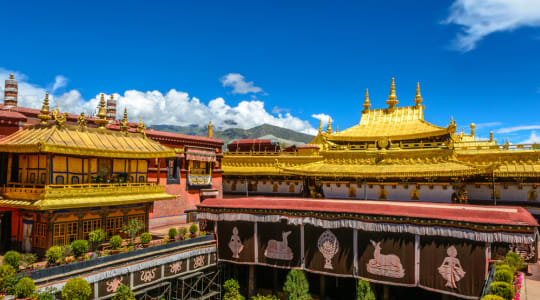
Jokhang Temple is a prominent Buddhist temple located in the old town of Lhasa, the capital of the Tibet Autonomous Region in China. It is considered one of the most sacred and important temples in Tibetan Buddhism. The temple was built in the 7th century AD during the reign of King Songtsen Gampo and is said to have been constructed to house the Jowo Sakyamuni, a statue of the Buddha that was believed to have been brought to Tibet by the Chinese princess Wencheng when she married King Songtsen Gampo.
The temple complex covers an area of around 25,000 square meters and features a blend of Indian, Tibetan, and Nepalese architectural styles. The main building is a four-story timber structure that houses the Jowo Sakyamuni statue. The statue, which is believed to be the most sacred and important Buddhist image in Tibet, sits on a lotus throne in the center of the temple and is surrounded by other smaller statues and frescoes.
The temple is also home to several other important relics, including the Sakyamuni Buddha's hair and the footprint of Guru Rinpoche (Padmasambhava), the founder of the Nyingma school of Tibetan Buddhism. The temple is a popular destination for pilgrims and tourists alike, and is recognized as a UNESCO World Heritage site as part of the historic ensemble of the Potala Palace.
Explore Near Jokhang Temple
Discover 3 attractions, 2 cities, and 1 airport within 75km. Perfect for planning day trips, finding connecting flights, or discovering new destinations to explore during your visit.
Nearby Attractions & Places to Visit
3 destinations within 4.3km - 7.9km from your location



Nearby Cities Worth Exploring
2 destinations within 5.1km - 46.7km from your location
Airports Near Jokhang Temple
1 destination within 41.6km from your location
Cross-Border Adventures Near Jokhang Temple
Discover cross-border adventures near Jokhang Temple. Explore neighboring countries with similar attractions and extend your travel experience across borders.








And 8 more neighboring countries